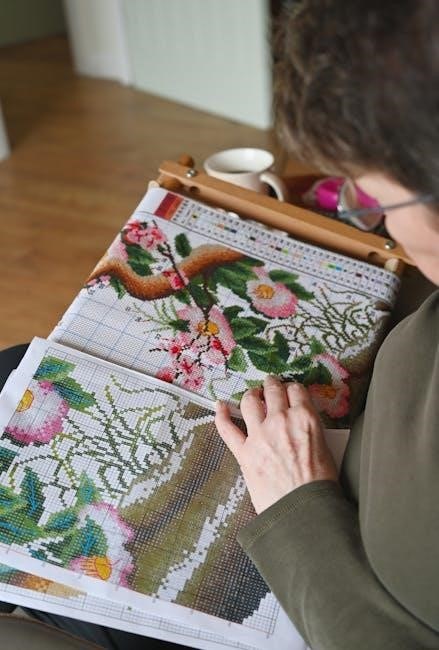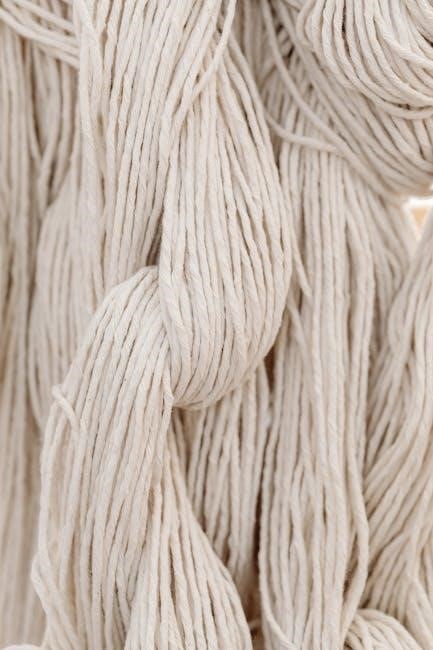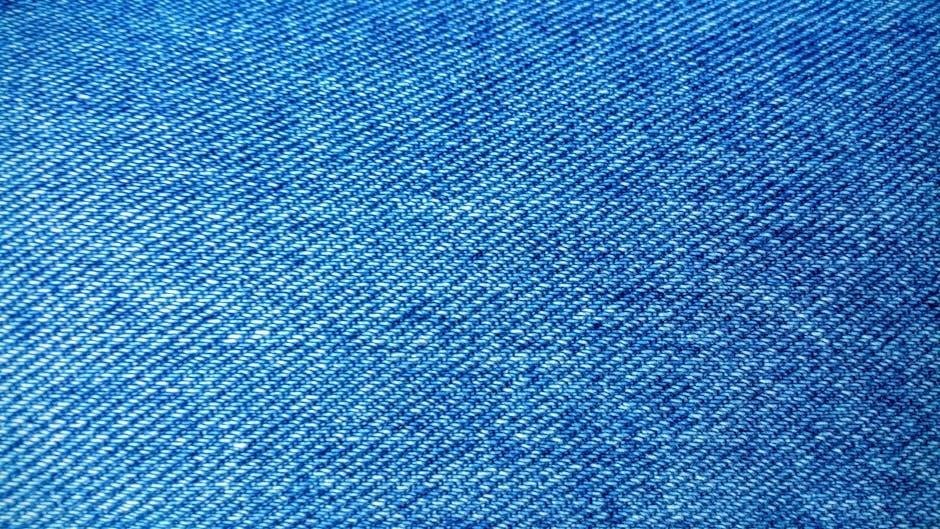PDO Thread Placement Guide: A Comprehensive Overview
This PDO thread placement guide aims to provide a comprehensive overview of everything you need to know about this innovative technique. This includes the basics of PDO threads to post-procedure care and maintenance for optimal results. Discover the advanced techniques in PDO thread placement.
PDO thread lifts represent a minimally invasive aesthetic technique aimed at combating skin sagging and overall appearance enhancement. They offer an excellent middle ground for individuals seeking long-lasting lift without resorting to surgery. PDO thread lifts are ideal for lifting skin that hangs and droops‚ particularly in the neck and face. They are optimal for people who have concerns with skin that’s no longer as resilient as it was. These threads provide immediate lift and support to sagging tissues‚ stimulating collagen production.
More specifically‚ PDO thread lifts offer an effective alternative for patients who prefer a less invasive procedure. The strategic placement of threads beneath the skin provides a scaffold‚ supporting and reshaping underlying tissues. This process triggers the skin to produce collagen‚ which keeps it smooth and tight. The threads gradually dissolve‚ leaving a new collagen network.
PDO threadlifts require correct placement in the appropriate tissue plane for achieving optimal results. In short‚ PDO thread lifts represent a versatile and effective non-surgical rejuvenation procedure.
Understanding PDO Threads: Material and Types
PDO threads are polydioxanone sutures used in surgery for many years. These threads‚ when placed in the proper plane of the skin‚ stimulate neocollagenesis: the body’s ability to create collagen. Most thread lifts use PDO‚ a natural protein woven into a thin thread similar to human hair. Studies prove these threads help new skin-firming collagen form. They gradually dissolve over six to nine months‚ boosting collagen during that time.
There are five types of PDO micro-threads that can be used for a PDO facelift treatment. PDO Mono threads (6/0-8/0) are inserted using the Quilting Inn technique into the medium to deep dermis. They promote tissue remodeling with lengths varying from 12-60mm.
Superficial fat pads are pivotal in PDO thread lifting. The BussoLyft technique involves creating vectors through volumization and utilizing tissue-engaging PDO threads. Volumization can create lifting vectors when applied to the fixed-masticatory area of the face. Using the proper dermal plane is key for achieving the safest and most optimal result in thread lifts.
Benefits of PDO Thread Lifts
PDO thread lifts offer an effective alternative for patients who prefer a less invasive procedure for treating loose or sagging skin. They provide long-lasting lift through the minimally invasive placement of biocompatible polydioxanone threads under the skin.
PDO threading involves the strategic placement of threads beneath the skin using fine needles. The threads act as a scaffold‚ providing immediate lift and support to sagging tissues. The placement of the thread triggers your skin to produce collagen‚ the protein that keeps your skin smooth and tight. As your skin slowly absorbs the thread‚ it’s replaced by a new network of collagen.
Collagen stimulation begins within the first week of your PDO Threads procedure. The effects can be seen in as little as 2-3 weeks‚ but are most evident in 4-6 weeks and persist up to 6 months depending on the type of PDO Threads placed. Benefits include firmer‚ smoother skin‚ and increased elasticity. Threads naturally dissolve over time‚ but the benefits of collagen production can last up to 2 years.
Patient Selection and Consultation
During the consultation‚ the practitioner will determine if a PDO Thread Lift is the right treatment for you. They will explain the procedure in detail and answer any questions you may have.
PDO Thread Lifts are optimal for people who have concerns with neck and face skin thats no longer as resilient as it was in the past. People who have cheeks or jowls that droop noticeably often opt for thread lifts. More specifically‚ PDO thread lifts offer an effective alternative for patients who are unable to have surgery for medical reasons or patients who prefer a less invasive procedure for treating loose or sagging skin.

Before the procedure‚ your provider will clean the area to be treated and draw temporary lines to help guide thread placement. The procedures efficacy stems from the strategic placement of biodegradable threads beneath the skins surface‚ providing a scaffold that supports and reshapes the underlying tissues.
Pre-Procedure Preparation Checklist
We recommend that you schedule your treatment 3 to 4 weeks in advance of any special events or vacations. It’s best if you wash your hair the evening before your treatment.
Avoid Blood Thinners or Ibuprofen/Aspirin‚ Fish oil‚ NSAID‚ Alcohol‚ Vitamins A & E‚ Garlic‚ Ginseng‚ Ginger or Green tea at least 7 days prior to procedure and 7 days after procedure to. Smoking and alcohol should be avoided for at least 1 week before the procedure because they can dehydrate the skin‚ increase risk of bruising‚ and delay healing.

Avoid consuming omega fish oils‚ vitamin E‚ chili‚ ginseng‚ garlic‚ krill and other such supplements at least two days before the treatment. Green and ginger teas should be avoided as well. All of the above can increase the risk of bruising. Avoid any medications with blood thinning properties. This includes Aspirin‚ Naproxen/Aleve‚ and Advil/Ibuprofen. Ideally‚ you should avoid these 72 hours prior to your procedure.
Anesthesia Options and Considerations
Proper anesthesia ensures patient comfort and reduces anxiety during the procedure. Anesthesia options and considerations during PDO thread lifting are essential for ensuring a comfortable and safe experience. The choice of anesthesia depends on the patient’s pain tolerance‚ the extent of the procedure‚ and the practitioner’s preference. Topical anesthetic creams‚ containing agents like lidocaine‚ are commonly applied to numb the treatment area.
These creams help to minimize discomfort during thread insertion‚ particularly for patients with a lower pain threshold. In some cases‚ injectable local anesthesia‚ such as lidocaine‚ may be used to provide more localized and deeper numbing. This option is suitable for more extensive procedures or areas with increased sensitivity. The practitioner will carefully assess the patient’s medical history‚ allergies‚ and any contraindications before selecting the appropriate anesthesia method.
Open communication between the patient and practitioner is crucial to address any concerns and ensure a positive and comfortable experience throughout the PDO thread lifting procedure.
Thread Insertion Techniques and Placement

Accurate thread insertion techniques and placement are paramount for achieving optimal and natural-looking results in PDO thread lifts. The procedure involves strategically inserting threads beneath the skin using fine needles‚ acting as a scaffold for immediate lift and support to sagging tissues. The practitioner will mark the treatment area with a pen to guide the placement of the PDO threads‚ ensuring precision and symmetry.
Various techniques exist‚ each tailored to specific facial areas and desired outcomes. One common approach involves creating vectors through volumization‚ utilizing tissue-engaging PDO threads to lift and contour the face. The BussoLyft technique‚ for instance‚ can create lifting vectors when applied to the fixed-masticatory area of the face. The choice of technique depends on the patient’s unique anatomy‚ skin laxity‚ and aesthetic goals.
Precise placement in the proper dermal plane is crucial for achieving the safest and most optimal results‚ stimulating neocollagenesis and ensuring long-lasting lift.
PDO Thread Placement for Face and Body
PDO thread placement is a versatile aesthetic treatment applicable to both the face and body‚ aimed at combating skin sagging and enhancing overall appearance. For facial rejuvenation‚ threads are strategically placed to lift sagging cheeks‚ define the jawline‚ and reduce the appearance of nasolabial folds. The placement of PDO threads can stimulate collagen production‚ leading to firmer‚ smoother skin‚ and increased elasticity.
In the body‚ PDO threads can address concerns such as loose skin on the neck‚ arms‚ abdomen‚ and thighs. The threads act as a scaffold‚ providing immediate lift and support to sagging tissues. The strategic placement of threads beneath the skin’s surface provides a scaffold that supports and reshapes the underlying tissues.
PDO threadlift treatment offers a safe and effective way of achieving a lifting effect of the face and body. Proper placement in the appropriate tissue plane is essential for achieving optimal results‚ which continue to improve after absorption of the threads. This minimally invasive technique offers exceptional‚ natural-looking results that last.
Immediate Effects and Collagen Stimulation
PDO threading involves the strategic placement of threads beneath the skin using fine needles. The threads act as a scaffold‚ providing immediate lift and support to sagging tissues. The procedure’s efficacy stems from the strategic placement of biodegradable threads beneath the skin’s surface‚ providing a scaffold that supports and reshapes the underlying tissues.
The placement of the thread itself triggers your skin to produce collagen‚ the protein that keeps your skin smooth and tight. As your skin slowly absorbs the thread in the coming months‚ it’s replaced by a new network of collagen. Collagen stimulation begins within the first week of your PDO Threads procedure. The effects can be seen in as little as 2-3 weeks‚ but are most evident in 4-6 weeks and persist up to 6 months.
You may continue to see an improvement for up to a year or more‚ especially if your provider uses threads with barbs or cones. PDO threads gradually dissolve over six to nine months‚ and you’ll see most of their collagen-boosting effects during that time.
Post-Procedure Care and Maintenance
Threads have minimal recovery time‚ but there is still plenty you can do to expedite your recovery and achieve optimal results. Ice the treated area for 5-15 minutes 4 to 5 times per day during the first week if you are experiencing bruising or swelling. Use of oral Arnica montana supplements or bromelain supplements both accelerate healing and minimize swelling and bruising.
You can take over-the-counter pain relievers such as Tylenol after your treatment. Avoid aspirin for 1 week after the treatment. Do not wash your face or hair for at least 12 hours unless your provider instructs otherwise. Avoid applying makeup or creams 24 hours afterwards. Sleep on your back if possible‚ with your head elevated for the first few nights to reduce swelling.

Do not pull your skin‚ massage or scrub the skin aggressively for at least 2 weeks. Restrict facial or neck movement in the area threads were placed for a couple of days. Consume easy to chew and soft foods for several days. Avoid chewing gum for at least 1 week.
Potential Side Effects and Complications
Experiencing slight discomfort and soreness in the first week after the procedure is completely normal. There may be a dull pain that persists sometimes up to 2 weeks after. Mild to moderate swelling may occur depending on how many threads are placed and the size.
Chewing and/or facial movements (smiling‚ laughing‚ yawning‚ chewing) may produce a sensation of knowing a thread is present under the skin. Sometimes twinges‚ zingers‚ or shocks may occur as well. This is caused by a thread being near a nerve and will gradually resolve within several weeks after placement.
Clicking/popping sounds or sensations are normal within the first 2 weeks following your Threadlift. The PDO Threads will gradually settle and intertwine with your tissue as you recover. Asymmetry or puckering of the skin may occur and typically resolves on its own over a few days. If it persists beyond 2 weeks‚ please contact us to schedule a follow up appointment sooner.
Expected Results and Longevity
The placement of the thread itself triggers your skin to produce collagen‚ the protein that keeps your skin smooth and tight. As your skin slowly absorbs the thread in the coming months‚ its replaced by a new network of collagen.
Collagen stimulation begins within the first week of your PDO Threads procedure. The effects can be seen in as little as 2-3 weeks‚ but are most evident in 4-6 weeks and persist up to 6 months depending on the type of PDO Threads placed.
Threads naturally dissolve over time‚ but the benefits of collagen production can last up to 2 years. According to proponents of the procedure‚ PDO threads gradually dissolve over six to nine months‚ and you’ll see most of their collagen-boosting effects during that time. You may continue to see an improvement for up to a year or more‚ they say‚ especially if your provider uses threads with barbs or cones (rather than smooth sutures).
When to Seek Follow-Up Care
After undergoing a PDO thread lift‚ it’s crucial to monitor your healing process and be aware of when to seek follow-up care from your practitioner. While some discomfort and side effects are normal‚ certain signs warrant prompt attention to ensure optimal results and prevent complications.
Make sure to schedule a follow-up appointment in 4-6 weeks for follow up photos to evaluate your progress and ensure you are healing properly.
You should contact your provider immediately if: You are experiencing unusual tenderness or extreme pain with or without swelling. You see increased redness or drainage of fluid from the entry sites. A thread begins to poke through the skin. Asymmetry or puckering of the skin may occur and typically resolves on its own over a few days. If it persists beyond 2 weeks‚ please contact us to schedule a follow up appointment sooner.